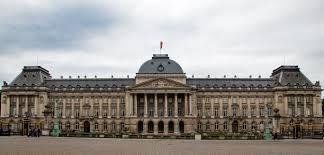Muscat, the capital city of Oman, is a captivating blend of traditional Arabian architecture and modern design, reflecti...
The Architectural Splendor of Brussels: A Cultural Mosaic

Brussels, the capital of Belgium, is renowned for its stunning architectural diversity that reflects its rich history and multicultural influences. At the heart of the city lies the Grand Place, a UNESCO World Heritage site, surrounded by opulent guildhalls and the Town Hall. This square is a masterpiece of Gothic and Baroque architecture, showcasing intricate façades and elaborate decorations that tell the story of Brussels' economic prosperity during the 17th century.
The Atomium, a striking structure built for the 1958 Expo, symbolizes modernity and innovation. Its unique design, resembling an iron crystal magnified 165 billion times, features interconnected spheres that house exhibition spaces, offering panoramic views of the city.

Another architectural gem is the Royal Palace of Brussels, the official residence of the King and Queen of Belgium. This neoclassical building, with its grand façade and beautifully landscaped gardens, exemplifies the elegance of royal architecture while serving as a symbol of Belgium's monarchy.
Brussels is also home to Art Nouveau masterpieces, particularly the works of architect Victor Horta. His designs, such as the Hôtel Tassel and the Maison & Atelier Horta, feature organic forms, intricate ironwork, and decorative mosaics, marking a significant departure from traditional architectural styles and embracing the beauty of nature.

The city’s eclecticism is further showcased in the modernist designs of buildings like the ING Art Center and the renovated Gare du Midi, which blend functionality with artistic expression. These structures symbolize Brussels' commitment to contemporary architecture while respecting its historical context.
Moreover, the European Quarter highlights modern architecture with structures like the Berlaymont building, housing the headquarters of the European Commission. Its sleek design represents the unity and progress of the European Union.
In conclusion, Brussels boasts a remarkable architectural landscape that seamlessly weaves together historical and modern elements. From Gothic cathedrals to Art Nouveau masterpieces and contemporary designs, the city embodies a rich cultural mosaic that continues to inspire and captivate visitors.
Share:




